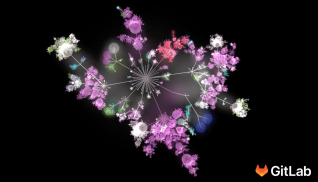We’ve all been there: A department all-hands. At GitLab, we’ve got them too. They’re important: There’s information you need to know, and there’s really only one way to handle it. While it’s true that we’re all-remote, and everyone joins from their location of choice, they’re still:
- Slow
- Synchronous
- Soul-sucking
A few months ago, one of our Support Engineering Managers (Lee) proposed that we try and embrace our value of efficiency and transition this agenda-driven meeting into a pure agenda, and remove the need for face-to-face communication.
Making a big transition like this did leave us with some concerns:
Synchronous meetings can be a chance for people to connect
At GitLab we recognize the value of getting to know one’s teammates. Employees are encouraged to schedule coffee chats throughout their time at GitLab to get to know one another. (In fact, we think it’s so important that it’s one of the key tasks in new employee onboarding ) We even have a consistent small group of people many of us meet up with (on video) four days a week to connect on a purely personal level built into the company calendar. These calls aren’t forced, but attendance is organic and inviting, because you will start to build connections. This is especially important in an all-remote organization.
Team-level meetings can also be an important time to sync up and have time to banter and share personalities. However, we noticed that as the room grew these interactions became less natural. Within the structure of the meeting we tried to correct this with process: Rotating meeting chairs, asking people to post a “Friday Song,” and including a specific meeting section called “Cheerful Banter.” It didn’t work.
Ultimately it was a subset of voices who felt comfortable participating in these ways. Meetings beyond a certain size appear to lose their value as a chance for connection. They were less a conversation and more an address. As a result, we felt that we’d have more results concentrating on other avenues for the support team to express themselves and get to know one another.
We tried rotating meeting chairs, asking people to post a “Friday Song,” and including a specific meeting section called “Cheerful Banter.” It didn’t work.
Synchronous meetings are a scheduled touchpoint
While all of our meetings are recorded and can be watched after the fact, there’s still something about having a cadence to the week. If there’s a meeting every Friday, I know that my brain will be getting new information on Fridays.
Transitioning to a meeting where there is no actual meeting left us with the challenge of making sure people read the document regularly.
To solve this, we have two touch points during the week: On Wednesdays we have an automated Slack reminder to put things in the document. On Fridays, we have an automated cut-off message that starts a Slack thread for discussion of the week's items. This structure gives a little bit of “rails” that really help package up the meeting.
Synchronous meetings (at GitLab) can be a chance to absorb while working on something else
There’s something about having the ability to turn off your camera (or watch the video after the fact). I, personally, enjoy having the space that being an inactive participant in a conversation allows. I’ll often chop vegetables, fold laundry, or go for a run while listening along.
In fact, this type of passive listening while working on something else is not discouraged at GitLab, in fact it’s actively encouraged in our handbook.
As we discussed the idea of changing this meeting, we thought it would work best if there was a format that would be efficient and multi-channel. As a big fan of podcasts myself, I thought that the format might work well.
Putting it together
If you’re interested in the nitty gritty details, we’ve made a workflow about how the podcast is actually put together in the Handbook.
 Slackbot reminds us to add content to the document every Wednesday
Slackbot reminds us to add content to the document every Wednesday
Briefly, one or more team members will first take a look at each of the links in a the "Week in Review" document and the surrounding narrative to build out a script. They'll next pull metrics from our dashboards surrounding our performance indicators and other numbers we're tracking, like the number of pairing sessions. Finally, all together the final recording, mixing and exporting happens – all before 12:00pm PST when a Slackbot announces the release.
All said, in many ways the ‘new’ format mirrors the old. We still move issues forward, make announcements, thank one another, review our metrics, and tell personal stories. Managers still wax poetic about the things that managers wax poetic about. Team members (probably) still roll their eyes. The biggest difference is that we’ve compressed an hour of “chair time” for 40 people into 10-15 minutes of anything time. And the data is still shareable, and readable too. I call that a win/win/win.
Want to hear what it actually sounds like? Check out our Support Week in Review from May 31, 2019.
In what ways can you more efficiently organize and disseminate information in your organization? Do you think a podcast would help? Let us know in the comments or tweet us @gitlab.
Photo by Matthieu A on Unsplash



